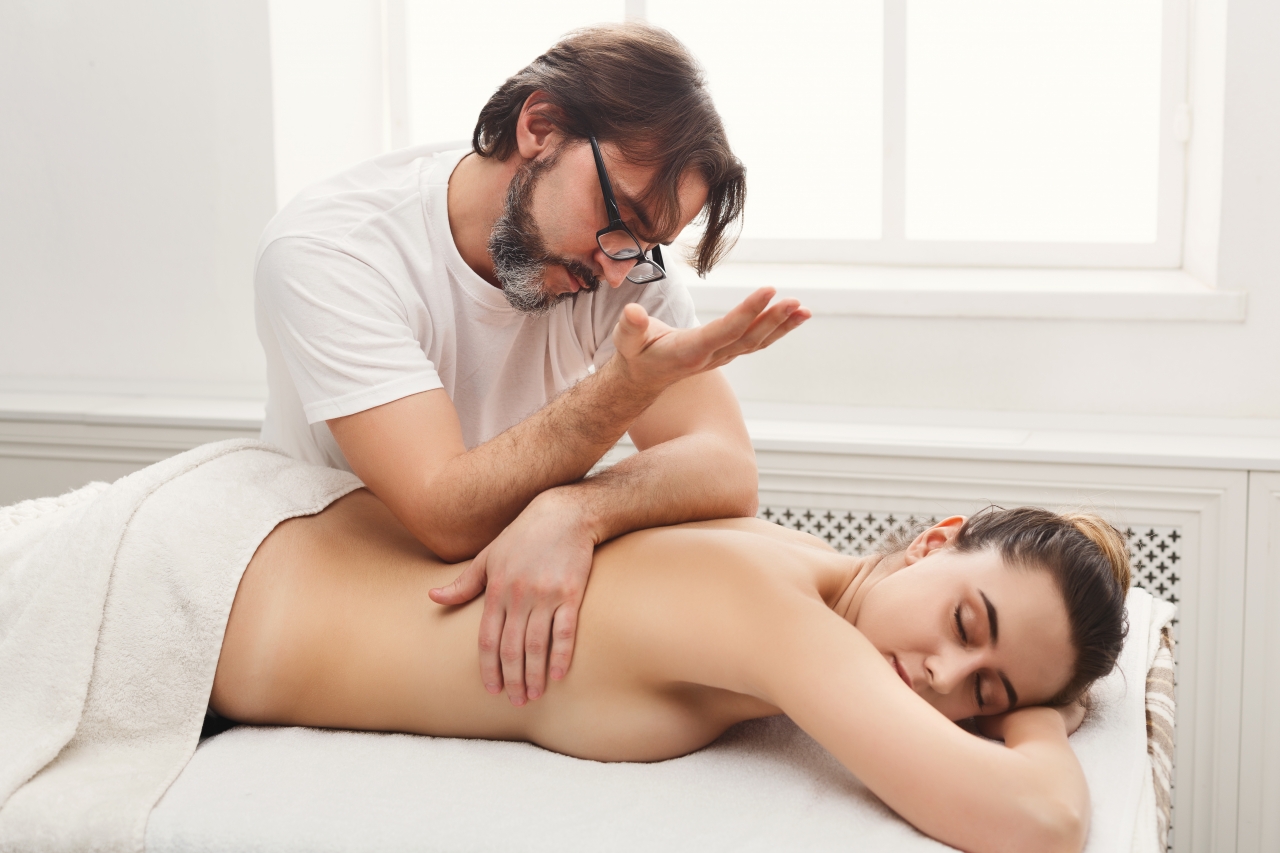Thai Massage: Like Yoga Combined with Touch
- Updated on: 2023-06-18
- Read original article here

Perhaps because of this cornucopia of historical influences, there are many variations of style within Thailand; different versions of the real thing. Some styles seem more like yoga, others emphasize acupressure, others highlight element theory, some seem like chiropractic adjustments, some move quickly, others slowly, and some work intentionally with mystical forces.
Each is part of Traditional Thai Medicine, and each therapist can find a style that personally suits them. Today, the Thai people as well as travelers still enjoy Thai massage throughout Thailand, and many schools also teach in English so Western students can learn it.
Thai massage is like yogacombined with massage, using compression, passive range of motion, pressure point therapy, fascia manipulation and heart-centered intentions (metta in Buddhist philosophy). Thai massage is traditionally performed on a floor mat, working over the client’s clothing. It can also be adapted to a table with the client draped. Either way, no lubricant is used.
The application of the practitioner’s palms, thumbs, feet, forearms, elbows and knees, coupled with dynamic body leverage, creates deep pressure with minimal effort. It’s especially known for the wide variety of assisted stretches, and is wonderful as a stand-alone treatment or incorporated into any type of massage.
Among the different styles of traditional Thai massage, the aim is often the same: to increase movement. In Thailand, people use the word lom, which is loosely translated as wind, meaning to increase ease of movement, to create space and to remove restrictions.
This applies to such physical elements as organ function, blood circulation, lymphatic flow, nerve impulses, muscle fibers, fascia, joints, tendons and ligaments, as well as such nonphysical elements, as energy flow, vitality, emotions and peace of mind.
When I first started learning Thai massage as an active 35-year-old, I was amazed to see that my 60-plus-year-old teacher could move around the floor with more flexibility than I could. That told me something. From the first moment a few moves were done on me, I became attracted to the work because it just felt so good. My body soaked it up.
After offering Thai massage to thousands of clients, I can confidently say the most common reaction is, “That’s the best massage I’ve ever had!” Don’t we all want our clients to feel that?
What Thai massage clients usually experience is reduced muscle tightness, joints that no longer feel stiff, greater ease of movement, less soft-tissue pain, the flush of increased blood flow, revitalization, deep relaxation and a greater sense of spaciousness, lightness and wholeness.
The beauty of slow, repetitive, passive, assisted stretching that is done within the client’s comfort level is that you can gently coax the muscles to lengthen and the fascia to soften without resistance. I like to call it working under the radar. By respecting the stretch reflex and only holding stretches at their maximum for a few seconds before releasing, then repeating a little farther, then releasing, and so on, the tissue loosens naturally.
You aren’t fighting to work out a muscle knot or force a certain range of motion. You work with the client’s body in a comfortable yet challenging way. And the client’s body responds by releasing tension and softening.
Specifically, the wide variety of Thai Massage techniques is believed to:
• lengthen muscle fibers, which can increase flexibility as well as lessen chance of injury
• soften fascia and reduce soft tissue adhesions, which can reduce pain and assist tissue recovery
• promote blood and lymphatic flow, which nourishes tissue and increases removal of waste products
• stimulate internal organs via compression, which allows for more efficient organ functioning
• promote a sense of openness and ease in the body
• calm and quiet the mind and emotions
• be uniquely relaxing as well as uplifting
Because Thai massage actively moves the physical structure of the body, care must be taken when working with any physical restrictions, particularly with recent surgery, injuries or restrictions in the spine or joints, osteoporosis, muscular or neurological or other imbalances that limit range of motion, or any other condition which could be adversely affected by compression or range of motion.
Because we are encouraging the body to open, the work can also feel intimate at times, so it’s important to be cautious and respectful. If in doubt, leave it out.
By keeping proper alignment, engaging your core, using leverage (instead of muscle force) and staying tuned into your client’s reactions, you practice working in a relaxed and mindful way. This can flow over into all the work you do, reducing therapist fatigue and overuse.
One of the reasons I fell in love with the work is because I could tell it would help me stay fit, was really fun to do, and was a heart-centered practice that resonated with me. The work tends to use a calming rhythm. I love feeling like I am dancing and moving and being mindful while working. That is as true today as it was almost 30 years ago.
Not that Thai massage is all that easy to learn! I had to pay attention, practice a lot, read my notes over and over, and be patient with my slow progress. But with practice and persistence, the work became an easy, flowing dance that is a joy to give and receive. I feel energized after a treatment, like I had a wonderful yoga or workout session myself.
Learning and giving Thai massage can help you:
• use your hands less
• strengthen and tone your muscles in a healthy way
• learn to work more efficiently, making every movement count
• practice using leverage and body positioning instead of muscle force
• deepen your understanding of the interplay of fascia, muscles, tendons, ligaments, and overall movement patterns
• allow you to work smarter not harder
• be patient with yourself
Not only will you have a unique bodywork tool that clients will love, but by working over clothing (or a drape), you’ll be able to reach clients who may not otherwise get a massage because they aren’t comfortable undressing.
You can expand your client base by offering deep work that doesn’t feel invasive, is easy on your hands, and lets you address parts of the body that can otherwise be awkward to get to. A client recently told me that one of the things they love about Thai massage is, “By staying clothed, you can easily get to places that are usually skipped but that need work. “(Like deep in the adductors.)
Thai massage also provides more positions to work from than the standard prone and supine. Both side-lying and seated positions are wonderful options for clients with restrictions that make other positions uncomfortable.
Don’t think side-lying is just for pregnancy massage. It provides fantastic options for addressing the inner thighs, hips, glutes, back and shoulders. And seated work transfers easily to any casual situation, as well as to chair massage. I often see the other therapists look over in envy as I do some great Thai massage techniques during a chair massage event.
Your treatments can become more therapeutic and comprehensive. By taking a client through joint range of motion, you affect deeper muscles that are difficult to palpate but are key to ease of movement.
Clients who like to move and actively participate in the care of their bodies are naturally attracted to the work. Former and current athletes love Thai massage as it compliments sports massage, they feel the benefits right away, and are happy to pay if it helps them stay active and competitive.
While watching our local professional team playing baseball one day, I saw a player get pulled from the game due to back spasms. I was able to call him that night and schedule three sessions over the next few days, which got him back in the game. He was thrilled, and he told his buddies about me. We all know that word-of-mouth is the best advertising there is.
I have been practicing for almost three decades, and I know that would not be the case if it wasn’t for Thai massage.
Explore Thai massage for yourself. Find a good teacher, receive from lots of people so you’ll learn what to do, as well as what not to do, introduce Thai massage to your clients, and stay open to discovery as you explore this beneficial therapy.
Rose Griscom, RTT, LMT, leads the Institute of Thai Massage-USA and is an NCBTMB Approved CE Provider. She has been practicing and teaching since 1994, when she completed an intensive program with the Thai Master Chongkol Setthakorn in Thailand, as well as with Arthur Lambert in the U.S. She brings a wealth of experience, enthusiasm and knowledge to her classes, along with a supportive, compassionate environment for learning.





